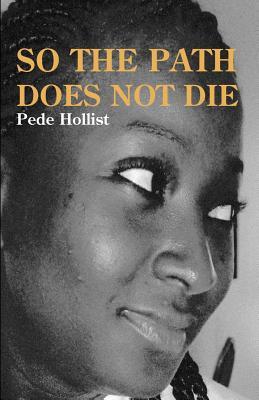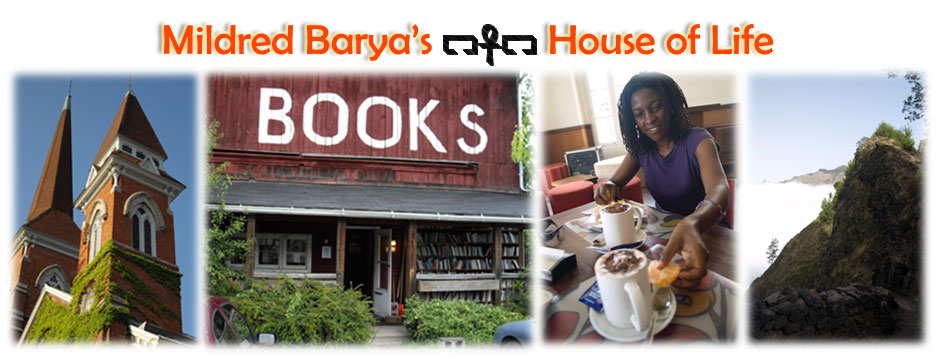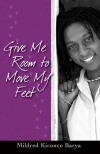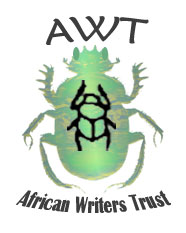 I’ve had this book for a while sitting on my shelf and beckoning to be read. But I got sucked into all the reading and writing for my PhD program I hardly had any time left for books outside the class requirements. When summer started and I closed the first year, So the Path Does Not Die is one of the books I carried with me on a camping trip. I was supposed to be admiring the mountains, drinking water from the rocks, listening to birdsongs… Instead, I hang up my hammock in the aspen grove and started reading Pede’s book. It did not disappoint. I do not know whether the fact that I was off the ground contributed to my being transported to Sierra Leone, but there I was with Finaba, the main character, seeing the country through her eyes, trusting her intuitions and confusions, immersing myself in her world and search for home. In short, my faith in what good fiction can do, should be able to do, was restored. Tension is at the heart of this book playing off tradition, modernity, individualism and community. Pede Hollist writes cleanly, brilliantly, with punches of humor and folk wisdom. Africa-Homeland and Africa-Diaspora meet and clash, reconcile, clash some more, meet and separate, unite and hang in delicate balance.
I’ve had this book for a while sitting on my shelf and beckoning to be read. But I got sucked into all the reading and writing for my PhD program I hardly had any time left for books outside the class requirements. When summer started and I closed the first year, So the Path Does Not Die is one of the books I carried with me on a camping trip. I was supposed to be admiring the mountains, drinking water from the rocks, listening to birdsongs… Instead, I hang up my hammock in the aspen grove and started reading Pede’s book. It did not disappoint. I do not know whether the fact that I was off the ground contributed to my being transported to Sierra Leone, but there I was with Finaba, the main character, seeing the country through her eyes, trusting her intuitions and confusions, immersing myself in her world and search for home. In short, my faith in what good fiction can do, should be able to do, was restored. Tension is at the heart of this book playing off tradition, modernity, individualism and community. Pede Hollist writes cleanly, brilliantly, with punches of humor and folk wisdom. Africa-Homeland and Africa-Diaspora meet and clash, reconcile, clash some more, meet and separate, unite and hang in delicate balance.
There is a village in which only women lived. Musudugu. It claims and haunts Finaba, who has left another village, lives in Maryland, US, but must find a way to return. Spiritually she never leaves, but the physical journey which she’ll take towards the end of the book will bring her full circle to Musudugu–the one that’s beyond reach or destruction. This is where we will see her as a healer, a compassionate soul, a caretaker of her people, a role that she chooses for herself and fulfils.
I enjoyed reading this story because it is juicy and well-written, because the narrative is full of “vim and vigor” (to use Pede’s own expression for one of his characters), without overstating anything. I was also struck by the similarities between Pede’s book (2012) and Chimamanda’s Americanah (2013). Especially the obsessions and desires that motivate the characters who have left Africa-Homeland, have settled in the US, are quite successful, to pack up and head back to the homeland that still vibrates in their hearts. The imagined, really, because what they find when they arrive is something else but it does not stop them from going on with their new self-defined missions. It is Cammy, Finaba’s fiancé who is originally from Trinidad that bursts the “back home” burble amongst immigrant friends.
These ideas are all in yuh head, Fina,” Cammy Chuckled. “Every time ah gone home, ah come back disappointed because what ah imagined or hoped for is not the way things are. Know why? No one answered. Because back home is a memory, a canvas of good times stitched together to cope with present realities. All this talk of going back reflects our unwillingness to accept our new home… There’s no past we can ever return to. Nigeria and Sierra Leone exist today, now! Each country is a real place with its own peculiar circumstances–good and bad… Yuh can visit Sierra Leone, Nigeria, Lesotho, even live there. Yuh just can’t return to some ideal past in any of them. Yuh’ll romantics. Back home talk is nothing but seeking refuge in nostalgia.” pg. 211
I appreciated the focus on the transcultural generation that’s taken strides in forging new identities, and yet lack the cosmopolitanism that would enable them to be at ease wherever they are. It’s pleasurable to find a common thread running through writers in various locations and times. Having read and reviewed Americanah some time back, So the Path Does Not Die comes out strongly as the pacesetter. But then, there are other fiction books written before and after 2012 that deal with the same subject matter. What I can say confidently is that while lying in my hammock in the Colorado mountains, I laughed and cried when reading Pede Hollist’s So the Path Does Not Die. It was funny, tough and profound, and I think you might delight in reading it as well.
To obtain a copy, click here. Published by Langaa Research & Publishing Common Initiative Group, Mankon Bamenda, Cameroon. 2012.
So the Path Does Not Die, was named 2013 Book of the Year for Creative Writing by the African Literature Association (ALA) at its annual meeting in April 2014 in Johannesburg, South Africa. “This award is for an outstanding book of African literature, whether novel, nonfiction prose, play, or poetry collection, published in the preceding calendar year by an African writer.”







No comments yet.